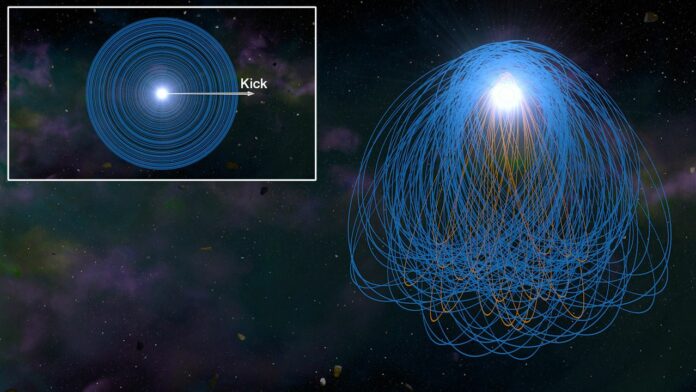White dwarfs are dead stars. Despite being similar in size to Earth, they have mass like the Sun. 97% of stars in our galaxy are white dwarfs, making our galaxy seem like an ethereal graveyard.
Despite their widespread presence, astronomers still need to clarify their chemical makeup. A puzzling finding contradicts our predictions of stellar behavior because heavy metal elements such as silicon, magnesium, and calcium are present on the surface of many of these compact objects.
The white dwarf is highly dense. If such heavy elements are on its surface, they should quickly sink toward the core.
JILA graduate student Tatsuya Akiba said, “So, you shouldn’t see any metals on the surface of a white dwarf unless the white dwarf is actively eating something. This behavior could hold the key to unraveling the mystery of a white dwarf‘s metal composition, potentially leading to exciting revelations about white dwarf dynamics.”
According to findings published in a recent paper in The Astrophysical Journal Letters, Akiba, JILA Fellow Ann-Marie Madigan, a professor of astronomy and planetary sciences at the University of Colorado Boulder, and undergraduate Selah McIntyre think they have figured out why these stellar zombies devour the planetesimals that are close to them. Using computer simulations, scientists replicated the observed phenomenon of the white dwarf receiving a “natal kick” during its development due to asymmetric mass loss, which modifies both its speed and the dynamics of any surrounding material.
Additionally, the researchers ran additional simulations to examine the white dwarf’s behavior after 100 million years. Unprecedentedly, they discovered that the planetesimals in close proximity to the white dwarf maintained their extended orbits and moved in unison.
Madigan said, “This is something unique about our theory: we can explain why the accretion events are so long-lasting. While other mechanisms may explain an original accretion event, our simulations with the kick show why it still happens hundreds of millions of years later. These results explain why the heavy metals are found on the surface of a white dwarf, as that white dwarf continuously consumes smaller objects in its path.”
Considering Madigan’s JILA research group’s gravitational dynamics, examining the gravity surrounding white dwarfs seemed like a logical area of investigation.
“Simulations aid in our comprehension of the dynamics of various astrophysical objects,” claims Akiba. In this simulation, the white dwarf, which is much larger than the other planets, is surrounded by a large number of asteroids and comets, and we watch to see how it changes and which of these objects the white dwarf consumes.
In upcoming initiatives, the researchers aim to investigate the interactions between white dwarfs and more giant planets by scaling up their simulations.
Understanding the development of white dwarfs is crucial for comprehending the millions of years of change that solar systems undergo. These latest discoveries shed further light on this process and provide more insight into the chemistry involved, helping to illuminate the beginnings and potential future development of our solar system.
“The vast majority of planets in the universe will end up orbiting a white dwarf,” Madigan says. It could be that 50% of these systems, including our own solar system, get eaten by their star. Now, we have a mechanism to explain why this would happen.”
“Planetesimals can give us insight into other solar systems and planetary compositions beyond where we live in our solar region,” McIntyre adds. “White dwarfs aren’t just a lens into the past. They’re also kind of a lens into the future.”
Journal Reference:
- Tatsuya Akiba1, Selah McIntyre2, and Ann-Marie Madigan. Tidal Disruption of Planetesimals from an Eccentric Debris Disk Following a White Dwarf Natal Kick. The Astrophysical Journal Letters. DOI 10.3847/2041-8213/ad394c
